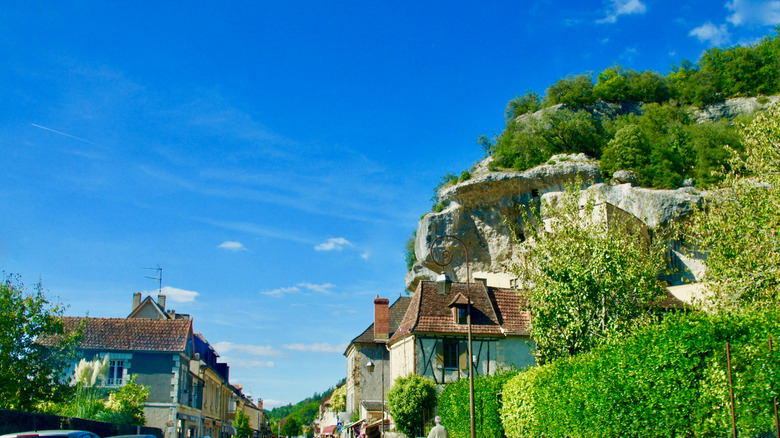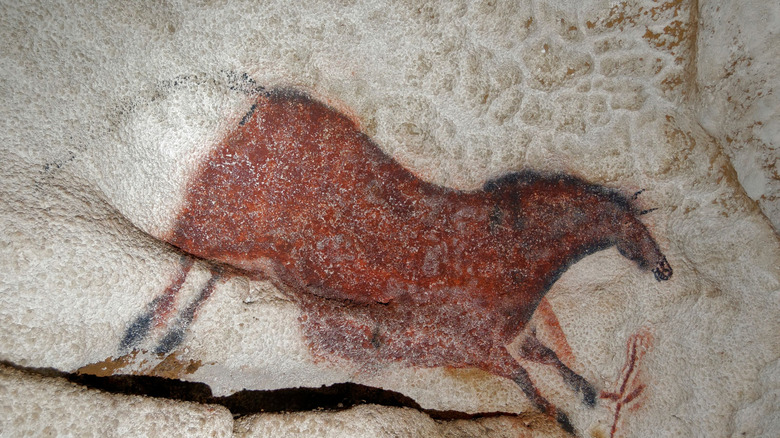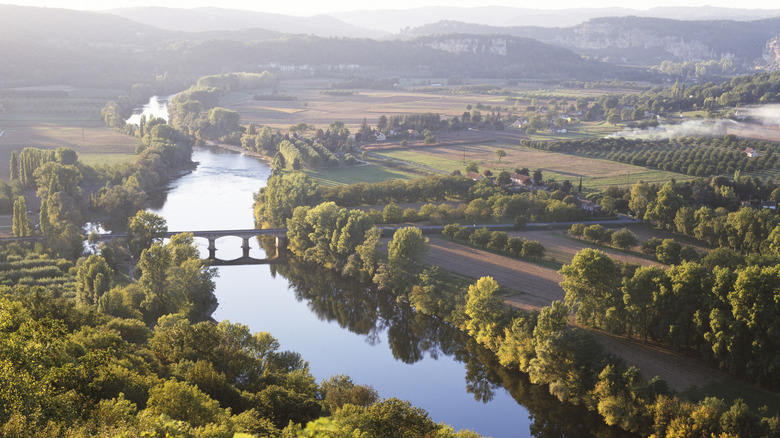The Best Spot In France To Experience Hidden Prehistoric Art, According To Rick Steves
Art and history buffs, don't just spend your time in the cities. While major tourist hubs like London, Paris, and New York City are certainly chock full of excellent museums, galleries, and cool, artsy things to do, exploring further field to see all the art and history a particular place has to offer is certainly rewarding. This is part of the reason why travel expert Rick Steves suggests traveling to the South of France to experience the Grotte de Font-de-Gaume, which he says is the "best place to see actual original prehistoric art" on his website. In case you didn't know, Steves is not only a renowned author, TV host, and European travel guide, he is also passionate about art and history.
So, it probably comes as no surprise that Steves encourages travelers to see Grotte de Font-de-Gaume. It's in France, which Steves has called the most exciting country in Europe. These caves are also home to ancient paintings of animals and other figures of prehistoric life. "Even before there was architecture, there were caves. In the South of France, with its honeycombed limestone cliffs, early humans painted surprisingly realistic scenes on the walls of caves," he says in an episode of Rick Steves' Europe entitled, "Art of Prehistoric Europe." The famous caves are located in the Les Eyzies, in the Dordogne Valley, which is part of the Périgord Noir region of France. The caves are about a three-hour train ride from the city of Bordeaux and about a six-hour drive from Paris.
What you'll experience at the Grotte de Font-de-Gaume
Of course, there are plenty of underrated tourist attractions in France, but none quite as significant to the history of humankind as the Grotte de Font-de-Gaume. The caves showcase paintings that were made about 15,000 years ago. The paintings depict many different types of animals, including horses, reindeer, woolly mammoths, wolves, cows, lions, and even woolly rhinoceri. But perhaps the most striking depictions are of wild bison, of which (out of the total 230 paintings) there are about 84 depictions. Even Rick Steves commented on how stunning the depictions are, saying that the bison are "painted with a moving sensitivity — often in elegant motion," according to his website.
The caves were only discovered in 1901, around the same time as the nearby Grotte des Combarelles, by a local teacher named Denis Peyrony. It was discovered even before the perhaps more famous Lascaux Caves (discovered in 1940), which are less than a 30-minute drive away. Not only are the Grotte de Font-de-Gaume caves a fascinating trip, but they're also one of the last prehistoric caves of their kind that are still open to the public. Of course, visiting them requires quite a bit of forethought. There are only 78 reservation spots available per day, and Steves recommends booking in advance. Slots are made available 15 days before the following month. If you're visiting during the low season, you can book guided tours of up to four people that last about two hours. Guided tours are available not only for the Grotte de Font-de-Gaume but also for nearby sites like the Grotte des Combarelles and more.
Other things to know about the Grotte de Font-de-Gaume
In addition to booking in advance, there are a few other things to remember if you're planning a visit to the Grotte de Font-de-Gaume. Admission for guided tours is about $15 per site, so if you want to check out multiple sites that are all around these caves, you will need to pay extra admission fees. People under the age of 18 may enter for free, and the same goes for European Union nationals and non-European residents in France up to the age of 25. Children under the age of 7 are not permitted in the caves. Some tours are only given in French, so be sure to check when you book your tickets online.
It's also important to remember that this is an outdoor site, which means your tour may be subject to weather, and you should wear appropriate clothing. This includes comfortable shoes that have a good grip. The temperature inside the cave is about 14 degrees Celsius (about 57 degrees Fahrenheit), so wearing layers and bringing a jacket is also a must.
There are many caves in the Dordogne Valley, as well as beautiful towns and other attractions. For history buffs, this part of France is full of must-see castles, aptly dubbed the "Land of 1,001 Castles." Buildings that date as far back as the Middle Ages and the Renaissance include Château de Bridoire, Château de Biron, and Château de Beynac. In addition, the Dordogne Valley is full of outdoor adventures, including places to swim, sit on a beach, go rafting, kayaking, canoeing, hiking, and cycling. Plus, you can easily bop from one charming little village to another (particularly if you have a car), and enjoy seeing some of the most beautiful villages in France.


